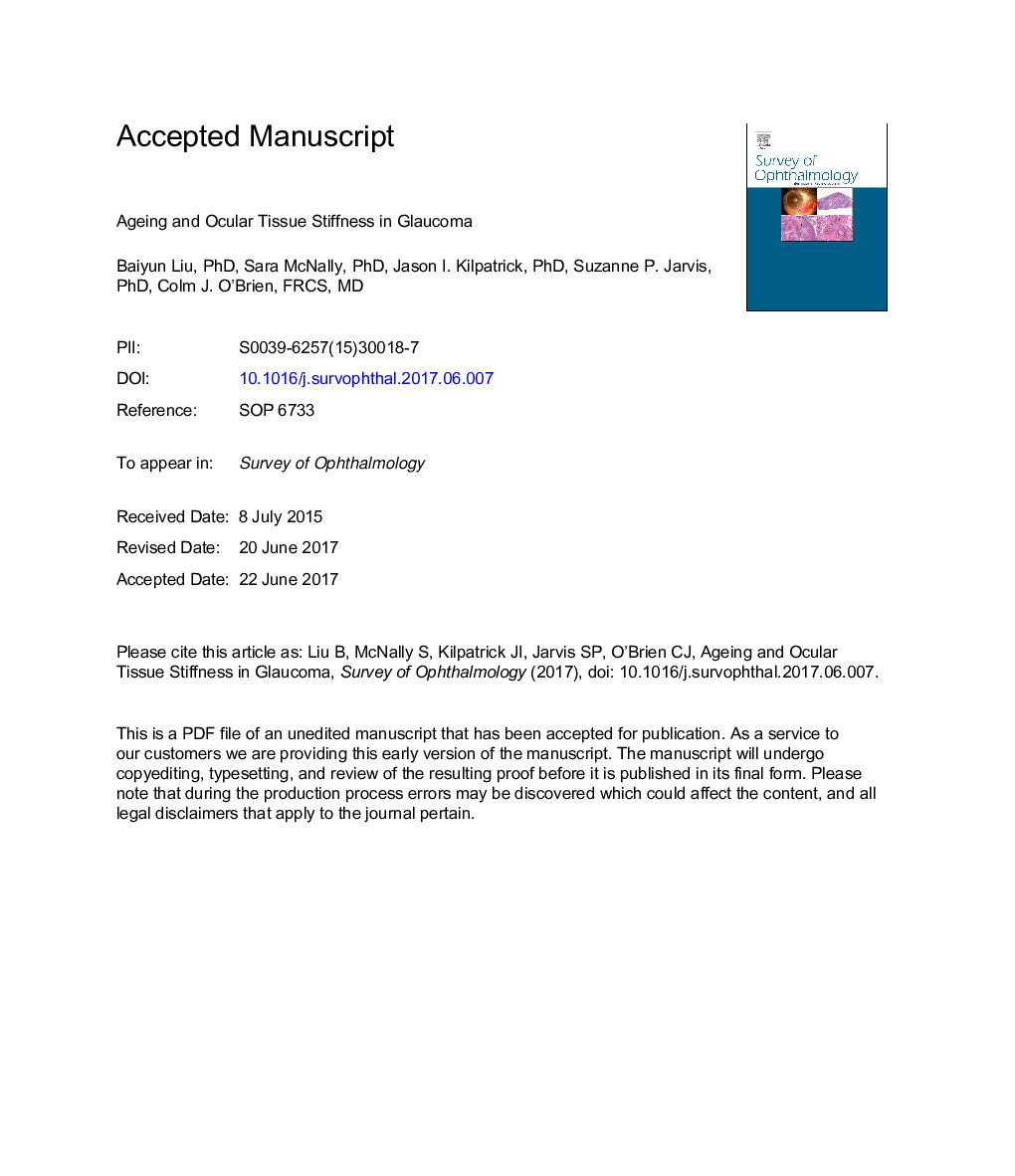| Article ID | Journal | Published Year | Pages | File Type |
|---|---|---|---|---|
| 8795220 | Survey of Ophthalmology | 2018 | 53 Pages |
Abstract
Glaucoma is a progressive and chronic neurodegenerative disorder characterized by damage to the inner layers of the retina and deformation of the optic nerve head. The degeneration of retinal ganglion cells and their axons results in an irreversible loss of vision and is correlated with increasing age. Extracellular matrix changes related to natural aging generate a stiffer extracellular environment throughout the body. Altered age-associated ocular tissue stiffening plays a major role in a significant number of ophthalmic pathologies. In glaucoma, both the trabecular meshwork and the optic nerve head undergo extensive extracellular matrix remodeling, characterized by fibrotic changes associated with cellular and molecular events (including myofibroblast activation) that drive further tissue fibrosis and stiffening. Here, we review the literature concerning the role of age-related ocular stiffening in the trabecular meshwork, lamina cribrosa, sclera, cornea, retina, and Bruch membrane/choroid and discuss their potential role in glaucoma progression. Because both trabecular meshwork and lamina cribrosa cells are mechanosensitive, we then describe molecular mechanisms underlying tissue stiffening and cell mechanotransduction and how these cellular activities can drive further fibrotic changes within ocular tissues. An improved understanding of the interplay between age-related tissue stiffening and biological responses in the trabecular meshwork and optic nerve head could potentially lead to novel therapeutic strategies for glaucoma treatment.
Related Topics
Health Sciences
Medicine and Dentistry
Ophthalmology
Authors
Baiyun PhD, Sara PhD, Jason I. PhD, Suzanne P. PhD, Colm J. FRCS, MD,
